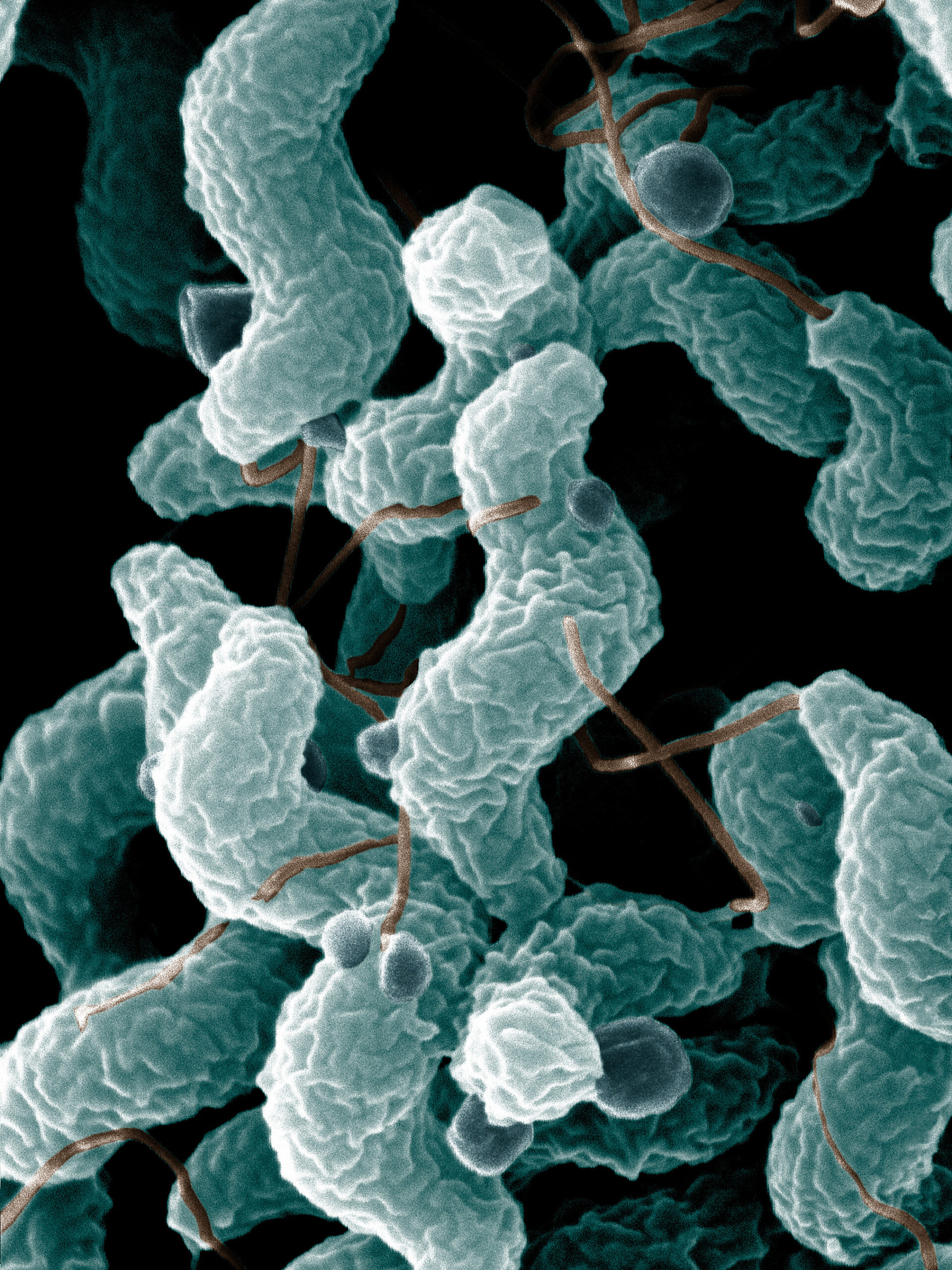Campylobacteriosis: Symptoms, Causes & Treatment
What are the symptoms of campylobacteriosis?
Campylobacteriosis is an infection caused by the Campylobacter bacteria, usually Campylobacter jejuni. It is one of the most common bacterial causes of diarrheal illness worldwide. Symptoms of campylobacteriosis typically appear 2 to 5 days after exposure to the bacteria and may include:
- Diarrhea: The most common symptom of campylobacteriosis is watery or bloody diarrhea. Diarrhea may be accompanied by abdominal cramping and pain.
- Fever: People with campylobacteriosis may develop a fever, which is usually mild to moderate in severity.
- Nausea and Vomiting: Some people with campylobacteriosis may experience nausea and vomiting, although these symptoms are less common than diarrhea.
- Malaise: General feelings of discomfort, fatigue, and malaise are common symptoms of campylobacteriosis.
- Muscle Pain: Some people may experience muscle pain or stiffness.
- Headache: Headaches are a common symptom of campylobacteriosis, especially during the early stages of the illness.
- Other Symptoms: In some cases, campylobacteriosis can cause more severe symptoms, such as arthritis, meningitis, or Guillain-Barré syndrome (a rare but serious neurological disorder).
It’s important to note that symptoms of campylobacteriosis can vary from person to person, and not everyone infected with the bacteria will experience all of these symptoms. In most cases, symptoms of campylobacteriosis resolve on their own within a week without specific treatment. However, severe or persistent symptoms may require medical attention. If you suspect you have campylobacteriosis or are experiencing severe symptoms, it’s important to consult with a healthcare provider for proper diagnosis and treatment.
What are the causes of campylobacteriosis?
Campylobacteriosis is caused by infection with Campylobacter bacteria, primarily Campylobacter jejuni. The bacteria are commonly found in the intestines of animals, especially poultry such as chickens, turkeys, and ducks. Campylobacteriosis is usually contracted by consuming contaminated food or water, or by handling infected animals or their feces. Common causes of campylobacteriosis include:
- Consuming Contaminated Food: Eating undercooked poultry, unpasteurized milk, or contaminated water can introduce Campylobacter bacteria into the digestive tract.
- Cross-Contamination: Campylobacter bacteria can spread from raw poultry or other contaminated foods to other foods, utensils, or surfaces if proper food handling practices are not followed.
- Drinking Contaminated Water: Drinking untreated water from contaminated sources can lead to campylobacteriosis.
- Contact with Infected Animals: Handling or coming into contact with infected animals, especially young animals such as puppies, kittens, and farm animals, can lead to infection.
- Person-to-Person Transmission: Although less common, campylobacteriosis can be spread from person to person through contact with infected feces.
- Travel to Developing Countries: Traveling to regions with poor sanitation and hygiene practices can increase the risk of exposure to Campylobacter bacteria.
- Immune System Factors: People with weakened immune systems, such as those with HIV/AIDS, undergoing chemotherapy, or taking immunosuppressive medications, are at higher risk of developing campylobacteriosis.
It’s important to note that Campylobacter bacteria are fragile and are easily killed by cooking food thoroughly, pasteurizing milk, and practicing good hygiene and sanitation practices. Preventive measures such as proper food handling, handwashing, and avoiding consumption of raw or undercooked poultry and unpasteurized dairy products can help reduce the risk of campylobacteriosis.
What is the treatment for campylobacteriosis?
Most cases of campylobacteriosis resolve on their own without specific treatment. However, in more severe cases or in individuals with compromised immune systems, medical treatment may be necessary. Treatment for campylobacteriosis may include:
- Fluid Replacement: It’s important to stay hydrated to replace fluids lost due to diarrhea. Drinking plenty of water or oral rehydration solutions can help prevent dehydration.
- Antibiotics: In severe cases or in individuals with weakened immune systems, antibiotics such as azithromycin or erythromycin may be prescribed to shorten the duration of symptoms and reduce the risk of complications. Antibiotics are usually not recommended for otherwise healthy individuals with mild symptoms, as they may prolong the duration of excretion of the bacteria.
- Anti-diarrheal Medications: Over-the-counter anti-diarrheal medications such as loperamide (Imodium) may help relieve diarrhea, but they are not recommended for use in cases of severe or bloody diarrhea, as they can prolong the infection.
- Rest and Symptomatic Relief: Getting plenty of rest and using over-the-counter pain relievers such as acetaminophen or ibuprofen can help relieve fever and muscle aches.
- Avoiding Certain Foods: It’s important to avoid dairy products, spicy foods, caffeine, and alcohol during recovery, as these can irritate the digestive tract.
- Follow-Up Care: Follow-up with a healthcare provider may be necessary, especially in cases of severe or prolonged symptoms, to monitor recovery and ensure there are no complications.
It’s important to practice good hygiene and food safety measures to prevent the spread of Campylobacter bacteria. This includes thoroughly cooking poultry, avoiding cross-contamination in the kitchen, washing hands frequently, and avoiding unpasteurized dairy products and untreated water. If you suspect you have campylobacteriosis or are experiencing severe symptoms, it’s important to consult with a healthcare provider for proper diagnosis and treatment.




